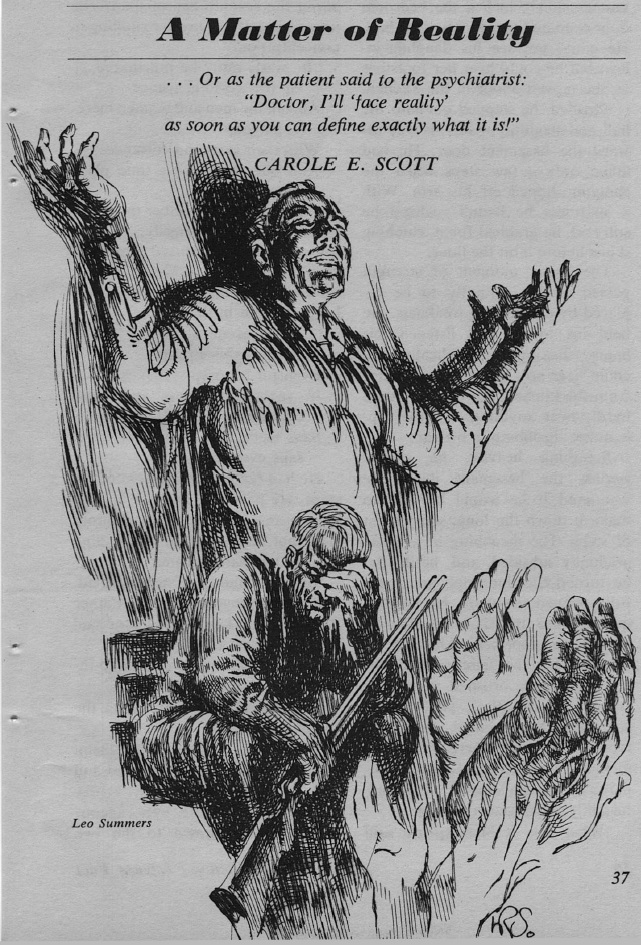
by Kaye Dee
Back in July, Gemini 10 accomplished an incredibly ambitious mission, and I wondered then what the next Gemini flight could do to top it. Now we know. In its three-day mission, Gemini 11 carried out a packed program: it made a direct ascent to its Agena target vehicle, soared even higher than its predecessor, conducted two EVAs and 12 different experiments, created artificial gravity and even performed the first computer-controlled return to Earth. I’m exhausted just listing all these highlights!

Gemini-11 prime and backup crews (L to R): William A. Anders, backup crew pilot; Richard F. Gordon Jr., prime crew pilot; Charles Conrad Jr. (foot on desk), prime crew command pilot; and Neil A. Armstrong, backup crew command pilot
Anchors Aweigh!
You could almost say that Gemini 11 has been a US Navy mission, since both its crew are naval officers. The Command Pilot, Commander Charles “Pete” Conrad Jr., was selected in the second astronaut group in 1962. He was previously the Pilot for the then-record breaking Gemini 5 mission, spending almost 8 days in space. Making his first spaceflight, Gemini 11 Pilot L.t Commander Richard “Dick” Gordon Jr. was part of NASA’s third astronaut intake in October 1963. Both men were previously naval aviators and test pilots.
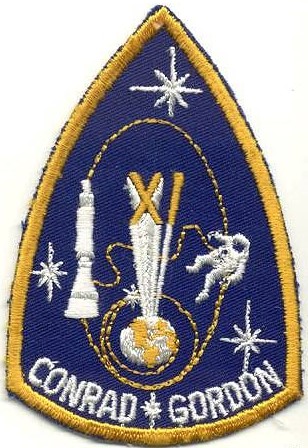
There’s also a nod to the crew’s US Navy background in their mission patch, which was designed in Navy colours of blue and gold. The major milestones of the mission are indicated by stars. The first orbit rendezvous with the Agena is indicated by the tiny star on the line representing the mission’s low Earth orbit, while the actual docking is marked by the large star on the left. The star at the top marks the plan to reach a record high apogee, and the star on the right signifies Astronaut Gordon's spacewalk. The three events symbolised by the three large stars are also depicted visually, with representations of the docked Gemini 11 and Agena, a gold line representing the high apogee orbit and a spacewalking astronaut. The Roman numeral XI soars above the Earth from the launch site in Florida.
Preparing for Apollo
An important goal of Gemini 11 was to prove the feasibility of the plan for direct ascent rendezvous on Apollo lunar missions, in which a returning Lunar Module will lift off from the Moon’s surface to rendezvous with the Command Module as it passes overhead. To practice this technique, Gemini 11 would attempt to rendezvous directly with its Agena target vehicle on its first orbit, rather than taking around four orbits, as has been the case on earlier Gemini flights. To achieve this manoeuvre, the Atlas-Agena target vehicle had to launch within the desired time, while the Gemini itself had only a two-second launch window!

Present and future in one picture. As Gemini 11 lifts off from the Cape Kennedy Air Force Station's Launch Complex 19, the first Apollo Saturn V rocket is on Launch Complex 39A at Kennedy Space Centre. This Saturn V is a non-flight Facility Verification Vehicle that is being used for pad fit checks
Although technical issues twice delayed the launch, Gemini 11 finally lifted off exactly on time 12 September (US time): its target vehicle had been launched an hour and 37 minutes earlier. Manoeuvres for Gemini to catch up with the Agena began quickly, and before its first orbit had been completed, Gemini 11 was flying in formation with its target and ready to dock. The actual docking was achieved nine minutes after rendezvous, just one hour and 34 minutes after liftoff. With an achievement like this, it’s amazing to think that the first rendezvous between two orbiting spacecraft occurred only nine months ago! Unlike Gemini 10, the Gemini 11 docking consumed less fuel than expected and both Commander Conrad and Lt. Commander Gordon conducted two docking exercises with the Agena, before a final manoeuvre established the docked spacecraft in a 178 x 188 mile orbit.

After a first orbit rendezvous, Gemini 11 is docked with its Agena. The target vehicle's antenna is seen extending upwards
“Ride ‘em Cowboy”
The first Extra-Vehicular Activity of the mission occurred 24 hours after launch, when Astronaut Gordon left the spacecraft to begin a spacewalk that was scheduled to last about 105 minutes, while he remained tethered to Gemini 11 by a life support umbilical line. After setting up a movie camera and retrieving a micrometeorite experiment, the next task involved fastening a 100-foot tether, stored in the Agena's docking collar, to a docking bar on the Gemini's nose. These would be used for experiments in passive stabilisation and the first creation of artificial gravity in space (see below!)

"Ride 'em cowboy," said Gemini 11 Command Pilot Conrad as Astronaut Dick Gordon rested on the Agena target vehicle. This view was taken over the Atlantic Ocean at approximately 160 miles above Earth
Like previous Gemini EVAs, working in space for an extended period proved more tiring than in the simulations and Gordon became exhausted, overstressing his spacesuit’s life support system. After attaching the tether, he stopped to rest, sitting astride the Agena, like a cowboy riding a bucking bronco. Heavy perspiration inside the suit obscured the astronaut’s vision, virtually blinding his right eye and the faceplate of his helmet became fogged due to heavy breathing. As a result, the EVA was terminated, with Gordon spending just 21 minutes outside the spacecraft.
Reaching New Heights
On 14 September, more than 40 hours into the mission, the Agena target vehicle’s primary propulsion system was fired for 25 seconds to thrust the docked spacecraft to a maximum altitude of 853 miles, establishing a new manned spaceflight altitude record! The Gemini 11 crew were enthralled by the spectacular view from this unprecedented vantage point. They particularly commented on the blueness of the water and marked curvature of the Earth below them.

Conrad and Gordon reached the maximum altitude of their high orbit over the southern hemisphere. As they looked west over the western half of Australia, Conrad said "We're looking straight down over Australia now. We have the whole southern part of the world out one window. Utterly fantastic."
After two orbits at this record-breaking altitude, completed in 3 hours, 23 minutes, Conrad and Gordon once again used the Agena’s engines to drive the joined spacecraft back down to their original low Earth orbit.
Standing Up in Space
On flight day three, Astronaut Gordon performed the mission’s second EVA, a “stand-up" spacewalk like that conducted on Gemini 10. Positioned in the open hatch, standing on his seat, Gordon spent two hours and eight minutes photographing the Earth, clouds and stars, as part of the range of experiments to be performed during the flight. During this period, Conrad manoeuvred the spacecraft to point Gordon and his camera in whatever direction was required. Unlike his first EVA experience, Gordon found the “stand-up” spacewalk so peaceful that he actually fell asleep!

Astronaut Dick Gordon stands in the open spacecraft hatch during the Gemini 11 mission
Inflight Experiments
The photography that Gordon undertook during his “stand-up” EVA were part of a packed program of 12 scientific experiments planned for Gemini 11. These included photography of the Earth for research in geology, geophysics, geography, oceanography, and related fields, and photography of clouds to study the fine structure of the Earth's weather system. Other experiments focused on astronomy and upper-atmosphere studies, while three experiments had specific military applications. There was a biological experiment looking at whether weightlessness enhances the effects of radiation on human white blood cells and Neurospora crassa fungi. An interesting photographic experiment investigated the regions of the L4 and L5 libration points of the Earth–Moon system. These are zones trailing and ahead of the Moon's orbit that are gravitationally stable. It is theorized that there might be clouds of particulate matter, or even tiny mini-Moons, which it is theorised may be orbiting the Earth in these regions.
Making Artificial Gravity!
After the stand-up EVA, 50 hours into the mission, Gemini 11 commenced a fascinating experiment in creating artificial gravity. Undocking from the Agena target vehicle, the Gemini 11 spacecraft slowly manoeuvred to stretch out the tether that Gordon had connected between them during his first spacewalk, and then allow the two tethered spacecraft to slowly rotate around one another.
The movement of the tethered spacecraft was first erratic, but stabilised after about 20 minutes, so that the rotation rate could then be increased. The astronauts found it challenging to keep the rope tether between the spacecraft tight, but they were able to demonstrate the "passive attitude stabilisation" of two spacecraft connected by a tether.

While tethered to their Agena target vehicle, the Gemini 11 crew manoeuvred their craft to keep the tether taut between the two. By firing their side thrusters to slowly rotate the combined spacecraft, they were able to use centrifugal force to generate about 0.00015 g of artificial gravity
The circular motion at the end of the tether created a slight artificial “gravitational acceleration” within Gemini 11. This is the first time artificial gravity has been demonstrated in space, even though that gravitational force was only 1.5 one-thousandths that of Earth. After about three hours, the rope tether was released, and the spacecraft moved apart.
Final Rendezvous
Although a fuel cell failed after the artificial gravity experiment, the remaining fuel cells were able to satisfactorily cope, and just under five hours before planned re-entry, Gemini 11 made a final “flyby” rendezvous with the Agena. This last rendezvous had not been part of the original flight plan but was made possible because of the fuel efficiency of the earlier rendezvous and docking manoeuvres. The fact that this rendezvous was made without use of the rendezvous radar, which had malfunctioned, is a testament to the skill and training of the Gemini 11 crew.

Gemini 11's Agena target vehicle seen during the "flyby" rendezvous. The tether from the artificial gravity and passive stabilisation experiment can be seen still attached to the vehicle
Coming Home Under Computer Control
Gemini 11’s return to Earth was the first fully automatic splashdown in the history of the US space program. On 15 September, at the end of its 44th orbit, Gemini 11’s retro-rockets were fired and the automatic re-entry was accomplished by computer commands directly to the thrusters. On earlier Gemini missions, the Command Pilot took controls of the re-entry at about 75 miles up, using the spacecraft's offset centre of gravity to generate lift for changes in direction. For Gemini 11, these manoeuvres were accomplished by computer commands. This process proved successful, and the capsule splashed down only 1.5 miles from the planned position in the Atlantic Ocean. A helicopter from the USS Guam picked up Conrad and Dick Gordon, taking the astronauts to the recovery ship.

Command Pilot Conrad climbs from Gemini 11 minutes after its successful computer-controlled splashdown
Heading to a Grand Finale
With Gemini 11, NASA demonstrated that it has has well and truly mastered rendezvous and docking. But the difficulties encountered by Lt Commander Gordon on his first EVA, and the problems that occurred on the spacewalks in previous missions, show that Extra-Vehicular Activity remains a challenge to be conquered. EVA is vital to the success of the Apollo programme, so Gemini 12, the final mission in this programme, will have spacewalking as its primary objective: it will be a grand finale indeed if Gemini 12 can demonstrate that the problems of EVA, like those of rendezvous and docking, have been successfully solved.

![[September 18, 1966] Soaring Higher (Gemini 11)](https://galacticjourney.org/wp-content/uploads/2021/09/Gemini-11patch-2-308x372.jpg)

![[September 16, 1966] Is Censorship Heating Up? (Fahrenheit 451)](https://galacticjourney.org/wp-content/uploads/2021/09/F451-Poster.jpg)

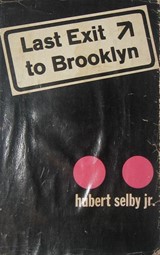
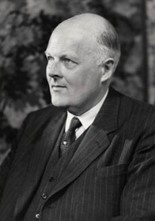



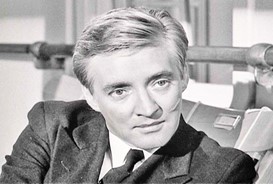
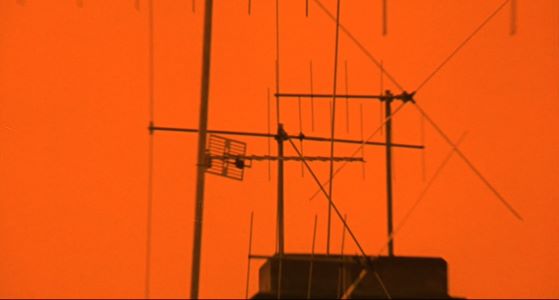
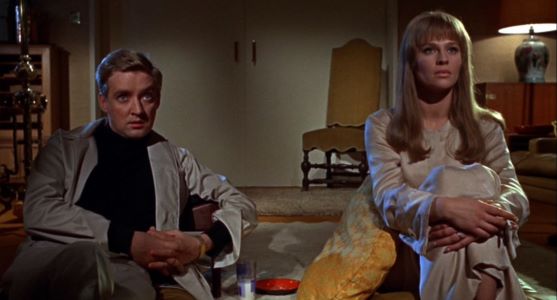
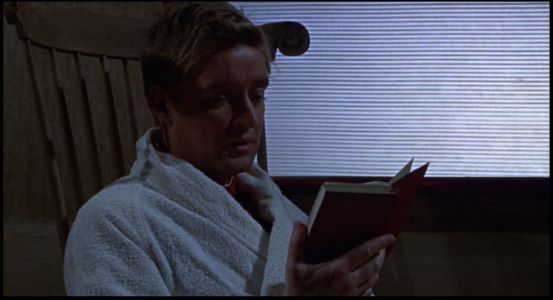
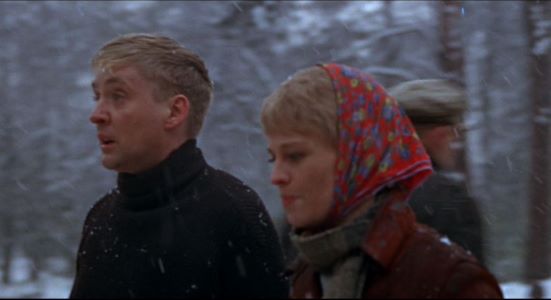

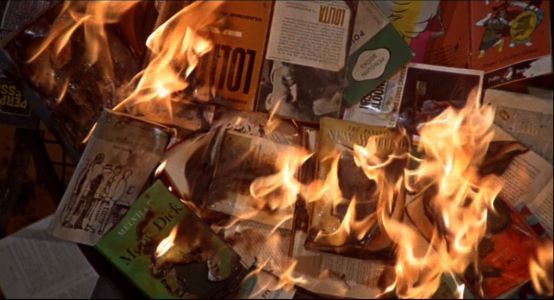







![[September 14, 1966] All the Old Familiar Places (October 1966 <i>Galaxy</i>)](https://galacticjourney.org/wp-content/uploads/2021/09/660912cover-672x372.jpg)

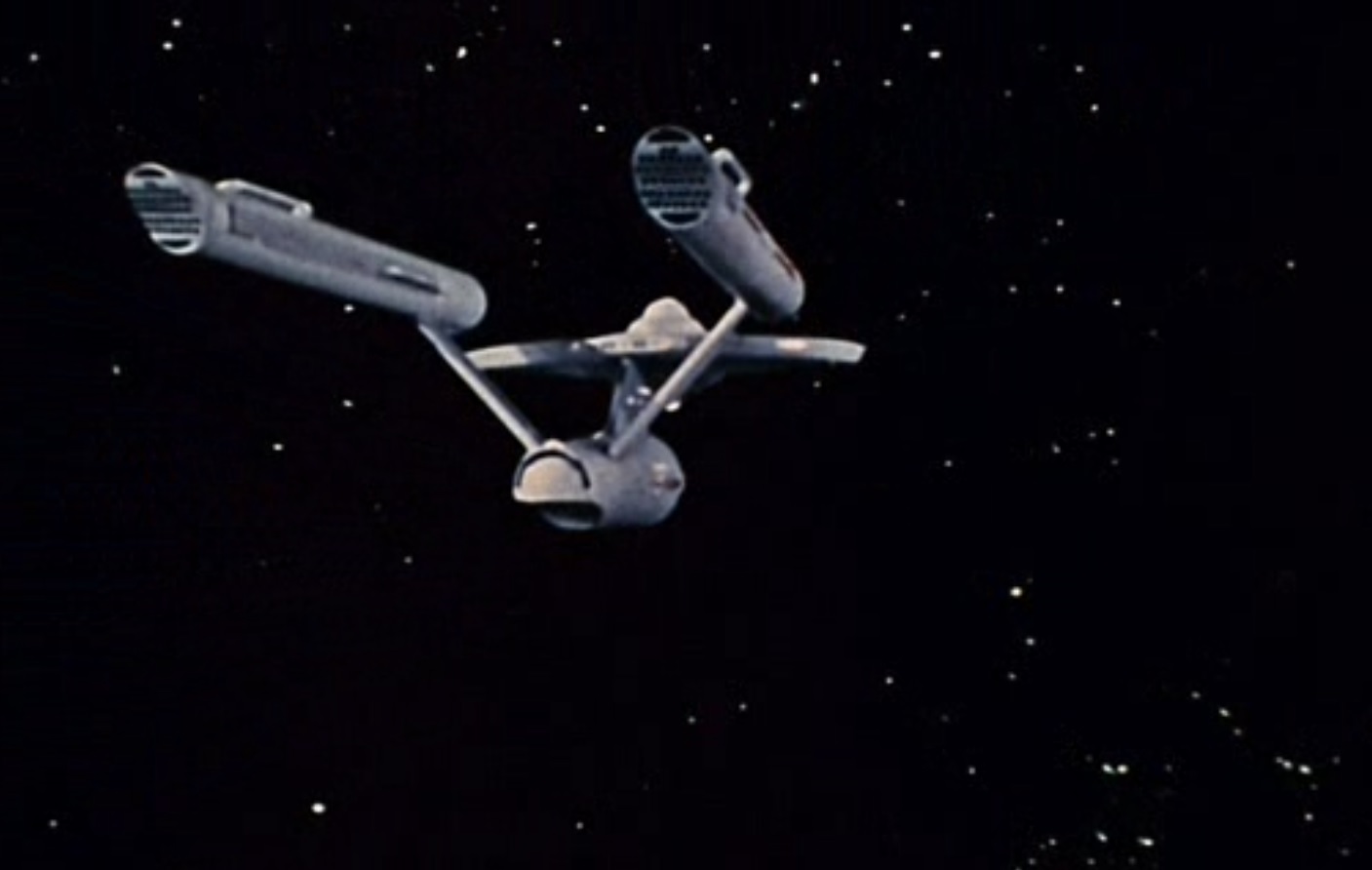
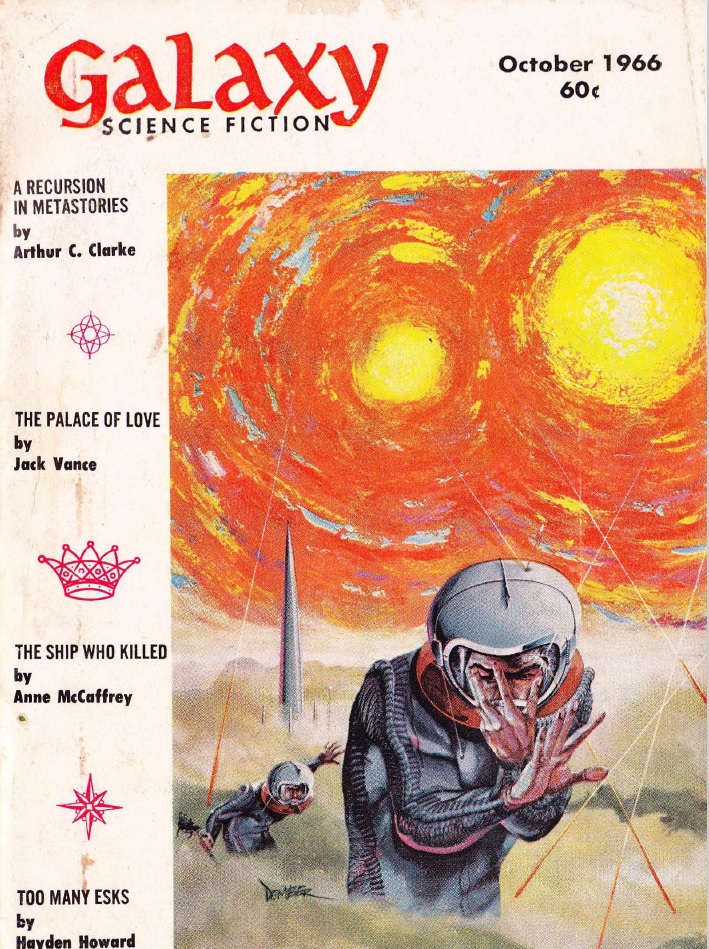
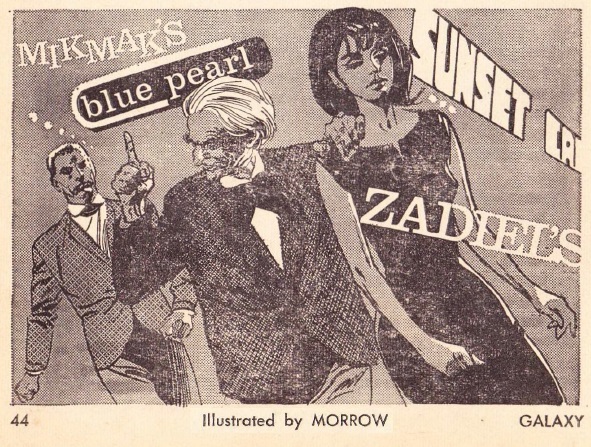
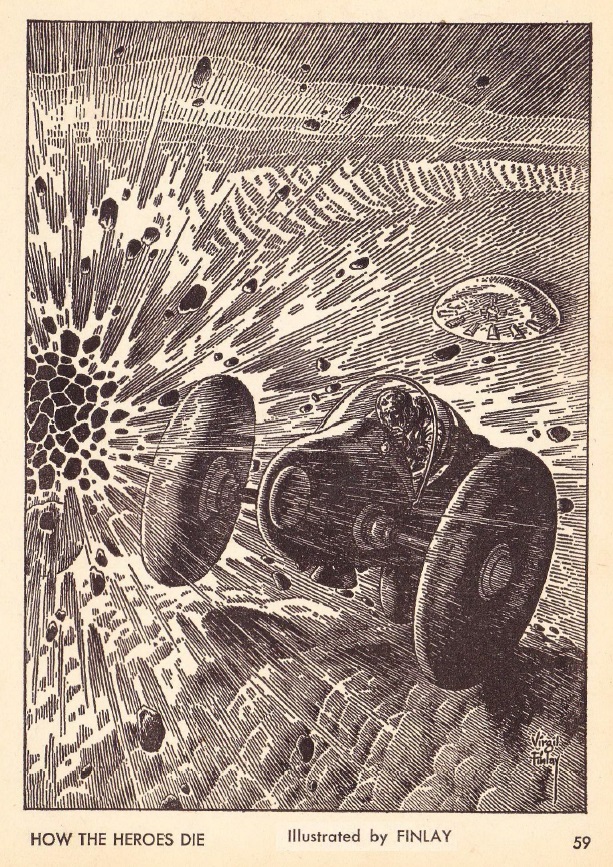
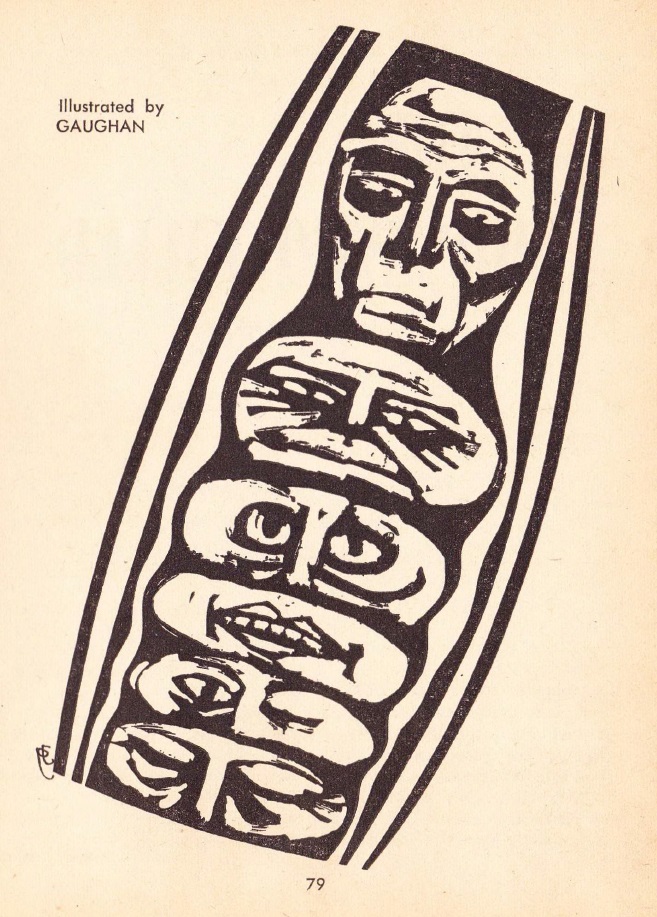
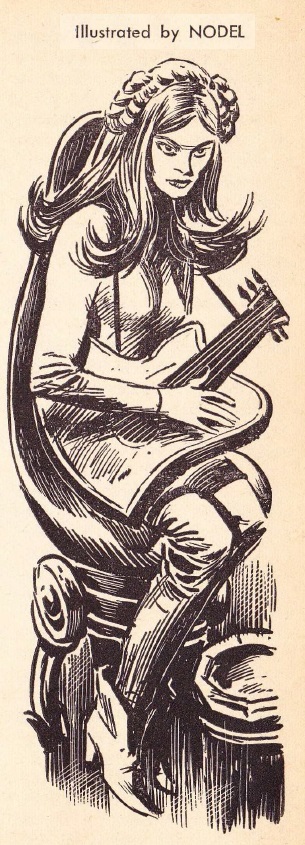
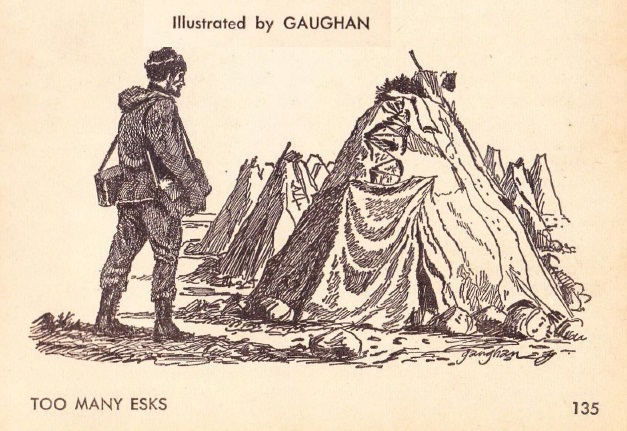
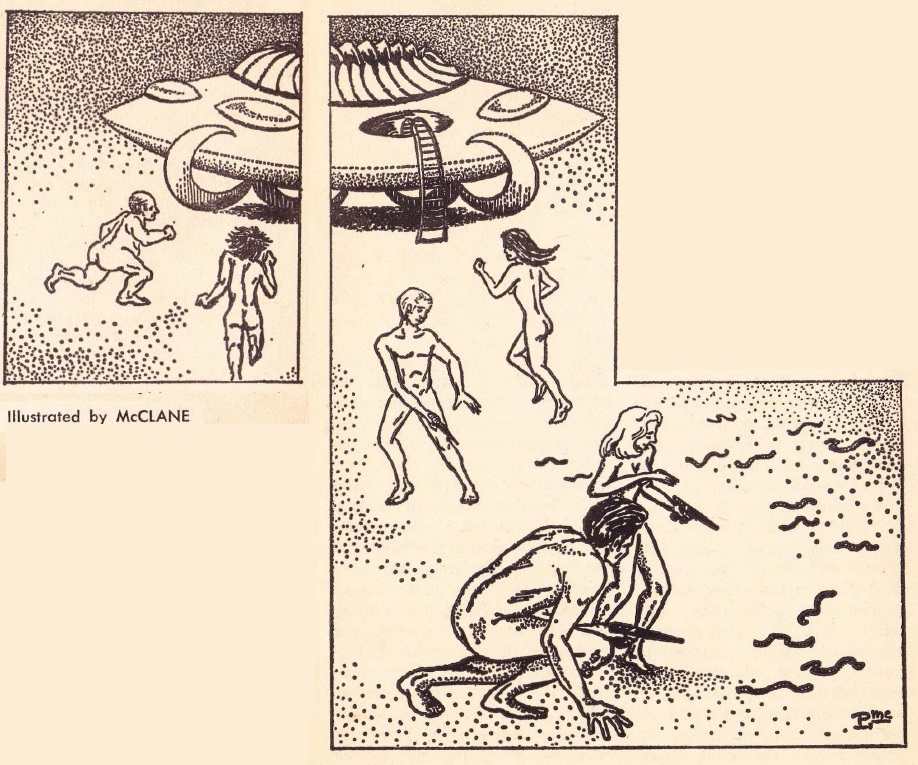
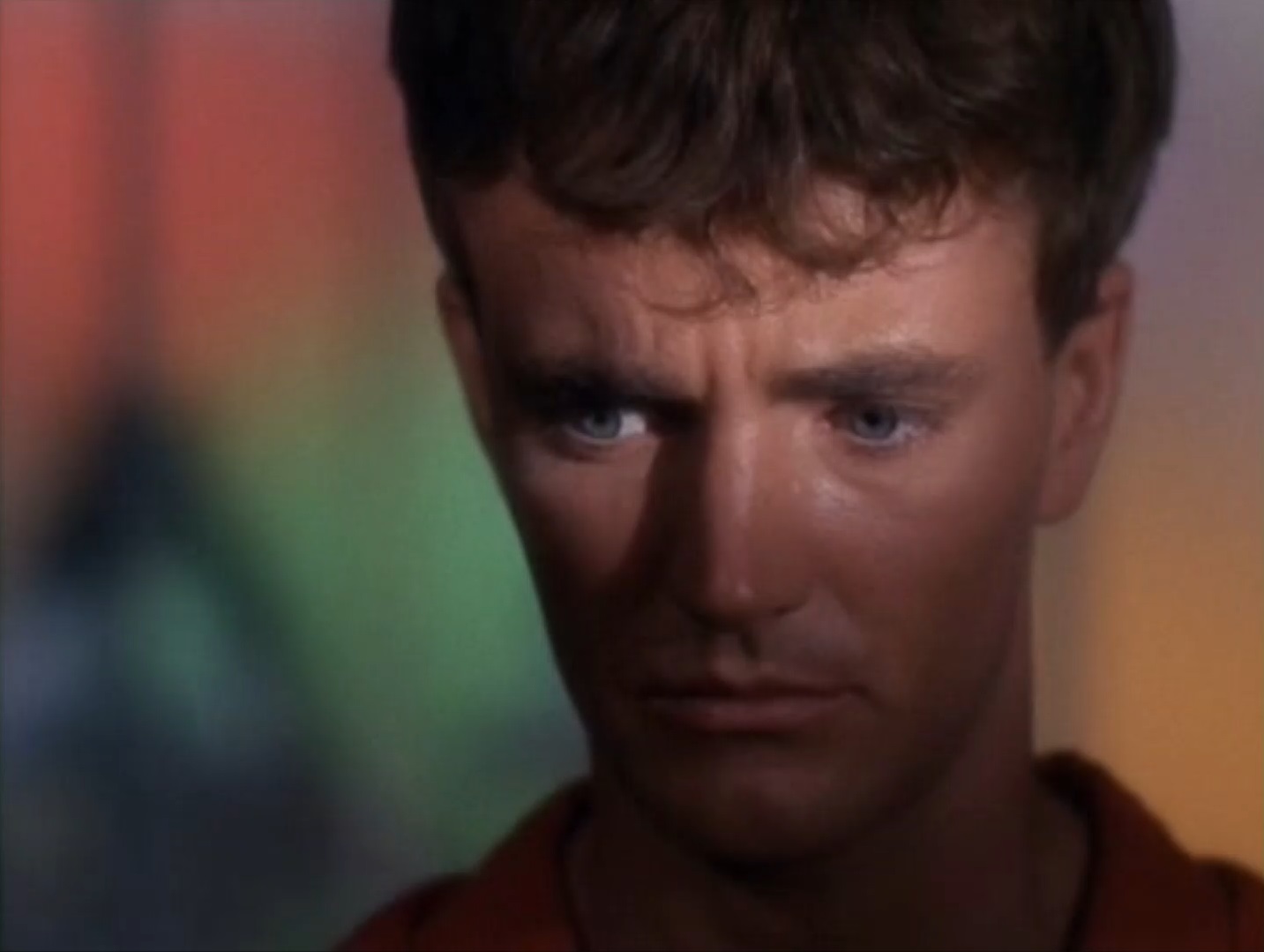
![[September 12, 1966] Boldly Going (<i>Star Trek</i>'s "The Man Trap")](https://galacticjourney.org/wp-content/uploads/2021/09/660914title-672x372.jpg)


















![[September 10, 1966] Bon appetit! (this month's Galactoscope)](https://galacticjourney.org/wp-content/uploads/2021/09/660910covers-672x372.jpg)

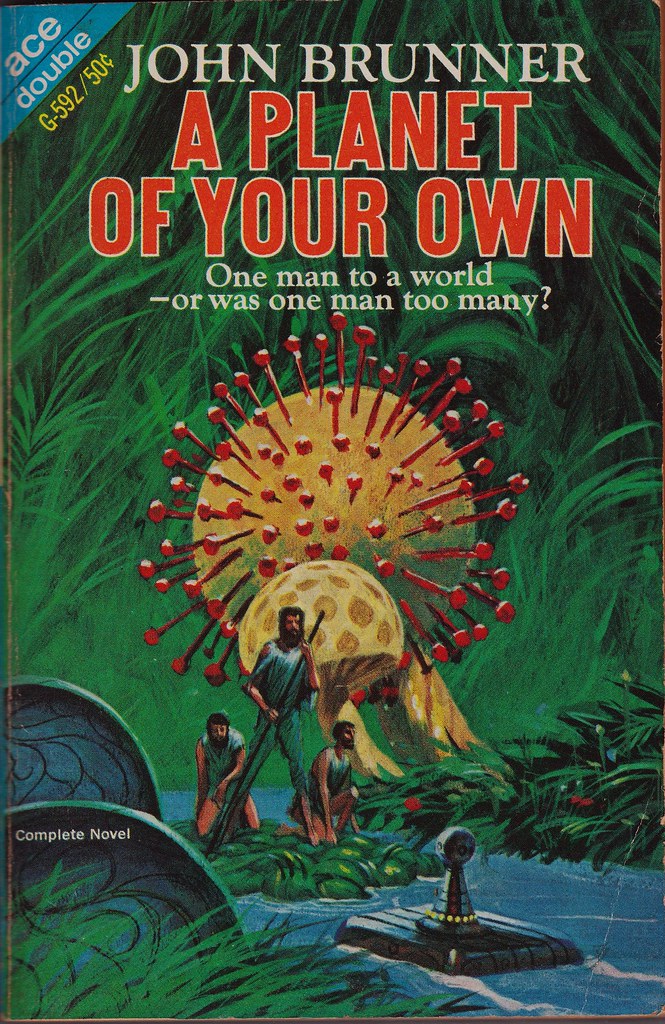

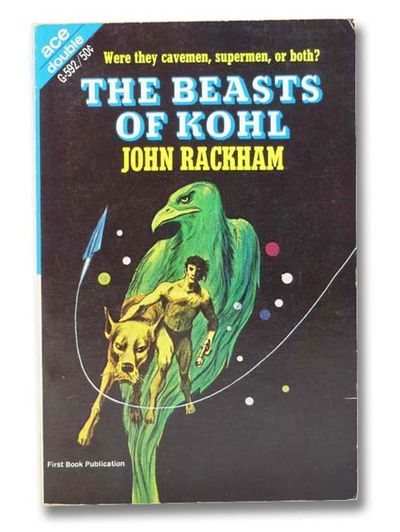


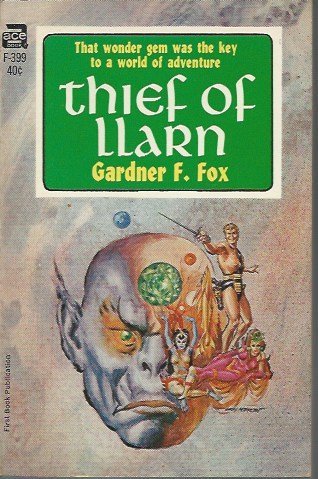

![[September 8, 1966] The Bare Hardly-Essentials (October 1966 <i>Amazing</i>)</big></b>](https://galacticjourney.org/wp-content/uploads/2021/06/amz-1066-cover-491x372.png)

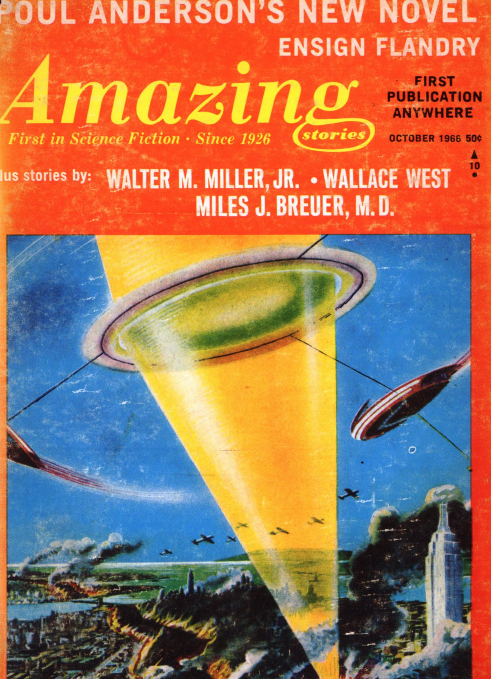






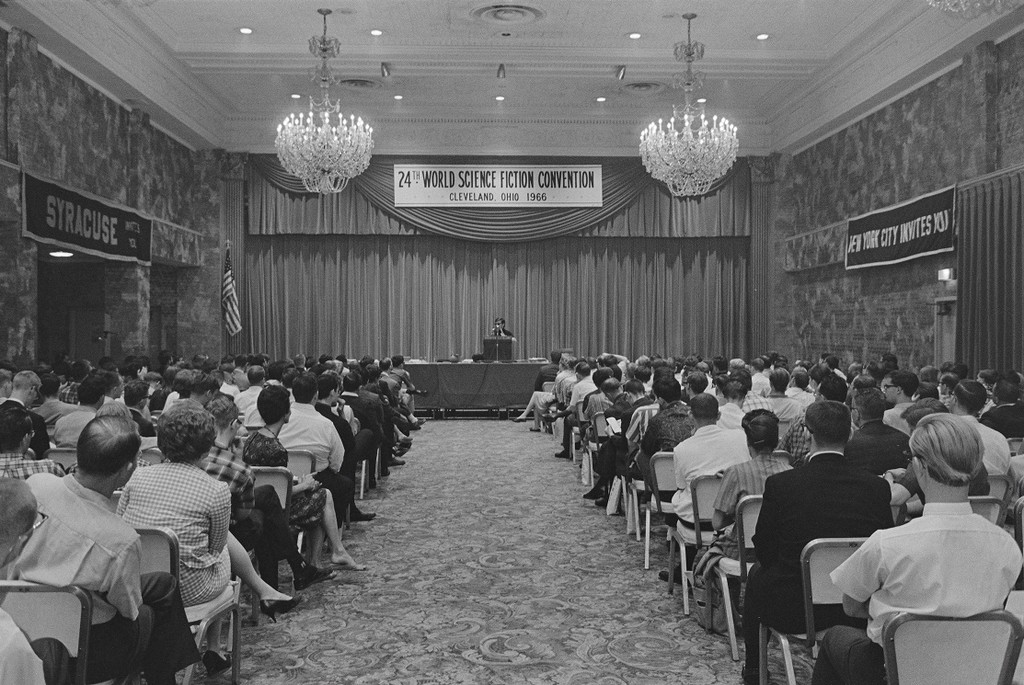














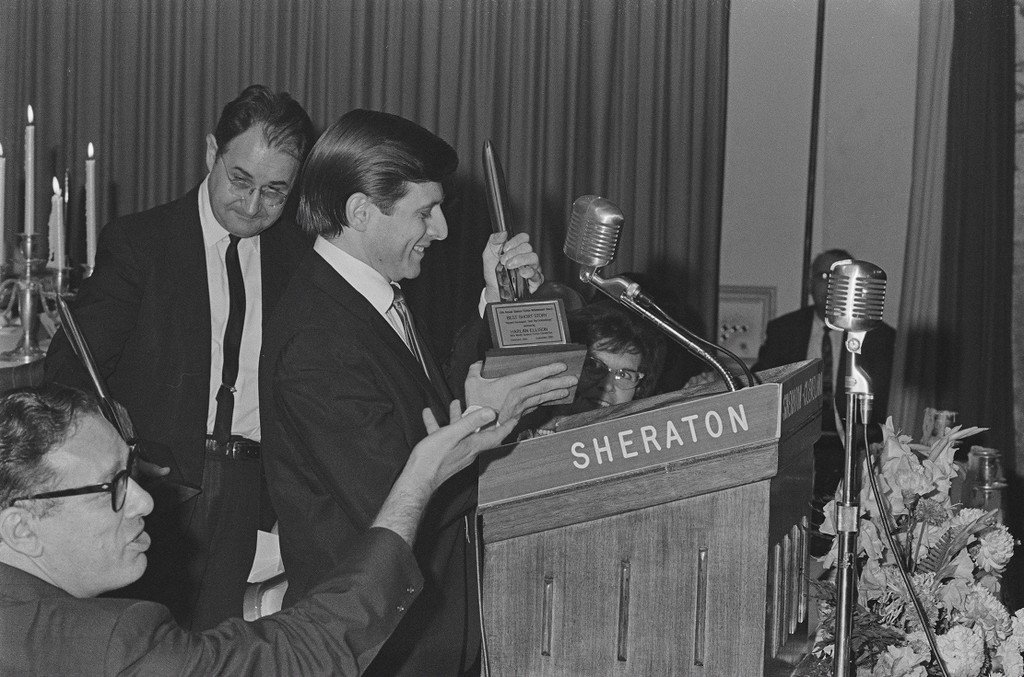

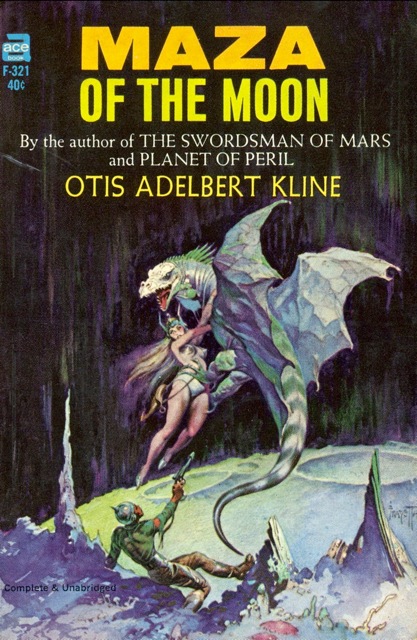


![[September 4, 1966] British Science Fiction Lives! (Alien Worlds #1 & New Writings in SF #9)](https://galacticjourney.org/wp-content/uploads/2021/08/Featured-Image.jpg)

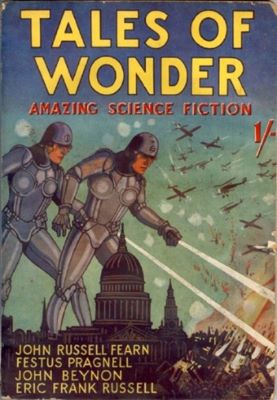
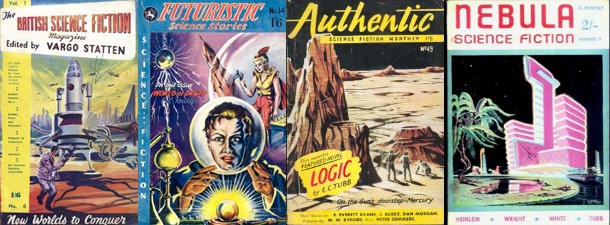

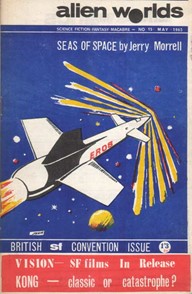
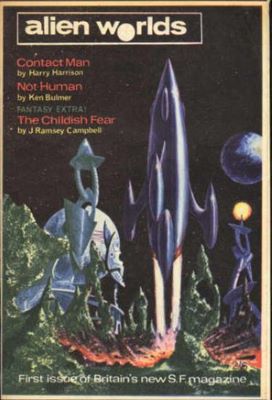
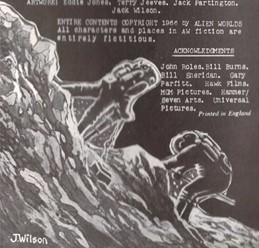
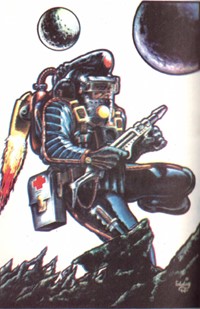

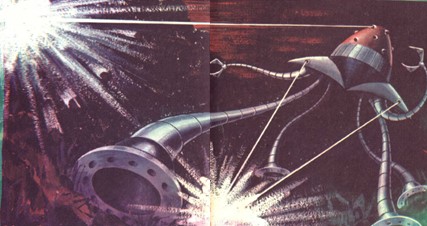

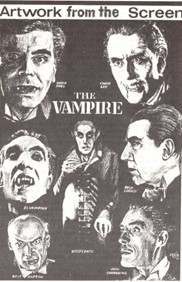
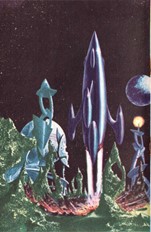
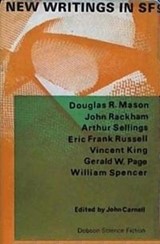
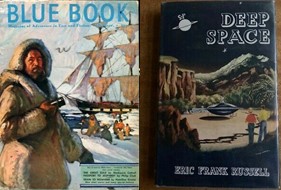

![[September 2, 1966] On the Edge (October 1966 <i>IF</i>)](https://galacticjourney.org/wp-content/uploads/2021/08/IF-1966-10-Cover-662x372.jpg)






